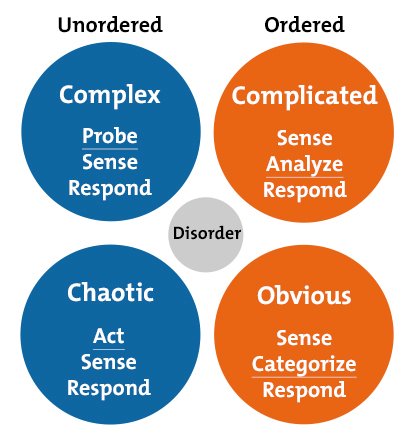
-
Victims often stay silent about their abuse. They may fear they will not be believed, or fear further abuse from the offender. Too often we hear that the blame for the abuse is placed on the victim rather than the offender.
Statements like these fall under the term victim-blaming:
- “She was flirting with him!”
- “He is known to be a liar.”
- “What was she thinking would happen if she dressed that way?”
- “He has chosen an alternative lifestyle and brought it on himself!”
We want to strongly caution you against approaching any reports or concerns of abuse from that perspective. Instead, we encourage you to appoint an individual to be responsible for receiving reports that will advocate for transparency and truth and also to be an advocate for the victim.
-
When Did Accountability Become a Four-Letter Word?
Leaders Holding Team Members Accountable December 9, 2021When did policies become a thing to be broken?
When were policies ever communicated that they were only guiding principles, or for that matter, suggestions to be broken?
Why do we laugh at the phrase, "It is better to say you are sorry than to ask permission?
According to Terry Carter, Carter's Professional Association, "Board members should be aware that they could be exposed to personal liability if they permit their organization to work with children or other vulnerable persons where the board has failed to implement an appropriate abuse prevention policy that has been customized to reflect the specifics of their organization. Failure to follow the protocol set out in the abuse prevention policy could also lead to liability, so it's important that an organization that has the foresight to implement a policy also makes sure the policy is strictly followed."
I am a bit stymied by a change I have observed over the last decade that challenges the rights of Board members, leaders, and employers to hold individuals accountable for their actions when there is a contract, Code of Conduct, and policies in place. I have heard stories from many leaders who say they are experiencing increased anxiety, spending an inordinate amount of their time reminding personnel of policies and procedures that have been willfully broken.
-
Developing a "Speak Up" Culture
Written by KidCheck; Posted with Permission
A “ Speak Up ” culture improves child safety and provides an excellent opportunity to create a safe and welcoming environment. It encourages staff and volunteers to raise concerns about illegal practices or policy violations without fear of getting in trouble...
-
By Melodie Bissell
We have been asked ...“What is the minimum we have to do?”“Don’t you think you are going over the top?”“Isn’t this just a money grab?”“Does it matter that we know everyone in our organization?”“When is all this going to stop?”“Do we have... -
How a "Speak Up" Culture Improves Child Safety
Written by KidCheck; Posted with Permission
Organizations dedicated to children and youth have an excellent opportunity to create a safe and welcoming environment by fostering transparency and encouraging open dialogue between leadership, staff, volunteers, and families.Encouraging...
-
Part 2: Recommended Best Practices for Child Protection Record-KeepingWritten by Telios Teaches; Posted with Permission, first posted on Telios Teaches
In Part 1 of this series on child protection record-keeping, we discussed whyeffective record-keeping practices are vitally important for organizations thatwork with children and how... -
Part 1: Effective Record-Keeping for Child Protection MattersWritten by: Telios Teaches, training provided by Telios Law PLLC
In an era where ministries may face lawsuits based upon decades-oldallegations of child abuse, effective child protection policies anddocumentation are paramount for organizations that work with children. This... -
We can do better! We must do better!
I woke in the middle of the night! My heart was heavy … I could not sleep! So, I put the tea kettle on and I decided to catch up on my reading.
- I reread a draft of an article on Lessons Learned from Fallen Leaders.
- I read an email that had just come in – An Open Letter to Victims of Clergy Abuse!
- I turned my attention to social media, where I read a flurry of social media posts criticizing leaders for their response to allegations of abuse.
- I read of a series of incidences of abuse within the cheer industry.
- I read the results of the investigation into allegations against Ravi Zacharias.
As a person of faith, I find comfort in reading the Psalms and Proverbs – but even there I read of oppression, plagues, abuse, the burden of suffering due to poor choices, and the enemy pursuing his victim and overcoming him. The folly of one’s ways.
When I read, I am challenged … provoked to be better … to do more … to feel deeply about the hurts and pains of this world.
Are you challenged when you read these accounts? Or do you just shake your head and criticize the offenders.
Is there anything that incites you and fuels your passion to do more, to be better yourself?
-
There are apologies and there are apologies.
There are apologies and there are apologies! February 12, 2021As more and more organizations and their leaders in our society come under scrutiny for misdeeds, bad decisions, criminal acts, they are finding that the act of apology is a critical piece in moving through a crisis and regaining the reputation they once had.
Reputation management is what organizations must do if they are to continue their existence. Public trust and public will can build or destroy those reputations. It does not matter if you are a celebrity or a small non-profit, your survival depends greatly on the Court of Public Opinion. Famed financier Warren Buffet once said that it can take twenty or more years to build a solid reputation. But it only takes twenty minutes to destroy it!
Apologies to the public for any transgression are, therefore, critical. It might be for statements made by employees or leaders, or it might be for actions or decisions made by corporate entities. Reading or watching the news these days will identify at least three per week from around the world.
-
Best practices are ideal for the simple design of a program or an event. We are all aware though that when caring for the vulnerable, a program is seldom simple, rather, as we learn in the Cynefin Framework, we often find ourselves in complicated or complex situations where best practices do not fit the scenario.
I remember a time when a youth pastor called me, frustrated as he was driving to a youth event and there was a lightning storm outside. He saw one of his students walking to the event fighting off the rain and wind and subject to lightning. He was facing a complex situation where he had to either leave the student to nature or break policy and forego the best practice of never driving a student alone in the car. At times like this, we want to buy-in to the myth that Plan to Protect® doesn’t work in complicated and complex situations. However, if you have heard me teach, you know I often speak of good, better, best and bad.












